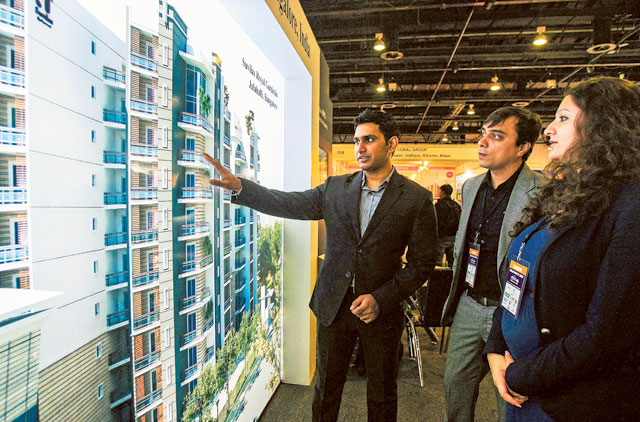Dubai: Developers in India are giving away gold, plane tickets to visit project sites, instant discounts on bookings made online and using celebrity fashion designers and Bollywood names to do up homes ... all in a bid to reel in buyer interest.
They needn’t have tried that hard.
According to industry sources, demand for Indian real estate has been building up nicely, cutting across all of the major cities. Some regulatory reforms — such as Delhi’s decision to increase the ‘floor area ratio’ and the higher ‘guidance value’ on commercial property in Bengaluru — will also be playing the part in stoking investor activity.
“Increase in floor area ratio translates into higher supply of real estate in any area — this is particularly good for Delhi as there has been no expansion in residential master plan for more than two decades now,” said Nishant Singhal, Director of Strategy and International Operations at Investors Clinic. “Developers will be able to build more on existing land parcels which can lead to some downward rationalisation of prices, especially in the luxury segment. Floor area ratio was recently increased in Gurgaon and we saw similar changes in Noida as well. However, this is not a nationwide trend.”
The current upturn has a pan-India feel to it. According to the consultancy CBRE, Mumbai was at the top of the rankings in garnering investments among all Indian cities, and followed by Delhi and Bengaluru. (For the wealthy, Mumbai’s super-premiums are no barrier going by the bookings generated — Rs5 billion (Dh295 million) in nine days -for the ongoing sales programme of the World One Tower — which bears a canny resemblance to the Burj Khalifa — from the Lodha Group.)
According to Kamal Khetan, Chairman and Managing Director of Sunteck Realty Ltd, “In the last three to four years, there have been more price cuts than price rise. A recent report points out that as of the third quarter of 2014, capital values appreciated 5-13 per cent in Bengaluru and 3-5 per cent in Mumbai compared with the same period last year.
Regulatory tweaks
“This is not in line with inflation, which is at 8-10 per cent. Thus, there has been no significant price rise in recent years.”
Even at the federal level, major regulatory tweaks have the potential to recast the country’s real estate space. The Land Acquisition Bill and the Real Estate Authority Bill are crucial in this regard, opening up the way for more foreign direct investment into the sector. Another boost would come by way of real estate investment trusts, especially so for commercial property.
But more can be done by improving the overall sentiments related to property purchases. “Consumers/investors need favourable macroeconomic conditions to increase absorption,” said Khetan. “A sustained fall in inflation with associated relaxation of monetary policies — signalling cuts in the home loan rate — are likely to end the waiting game for a number of fence-sitters.
“Lower absorption levels and relatively higher new launches are affecting inventory. However, average capital values have shown signs of recovery and subsequent growth.
“The recent government initiatives to promote affordable housing — by increasing home loan limits and the removal of statutory liquidity ratios for affordable housing loans by RBI (Reserve Bank of India) — is likely to aid in lower loan rates for buyers in the residential category. Once this happens, a shift in curve is expected.”












